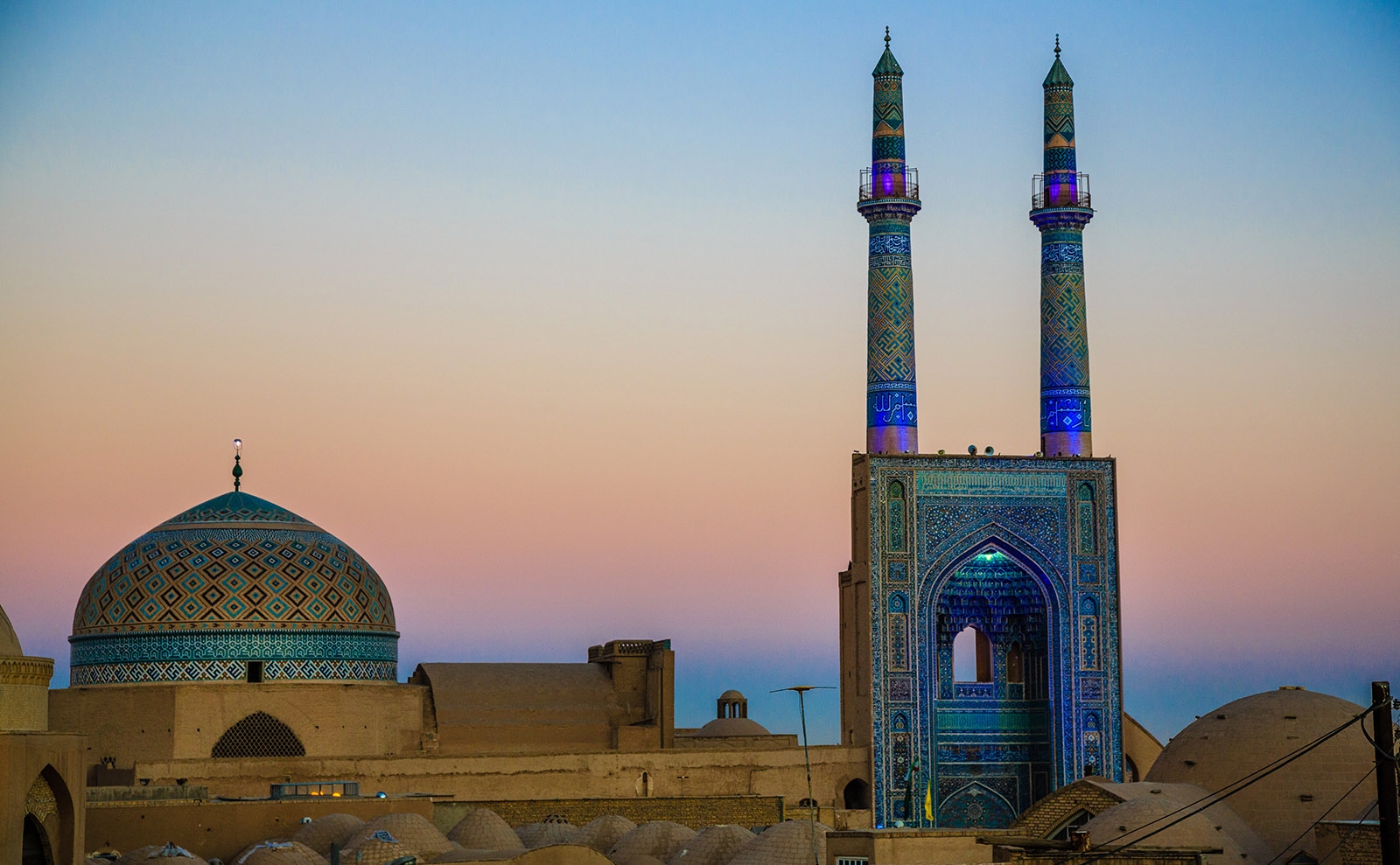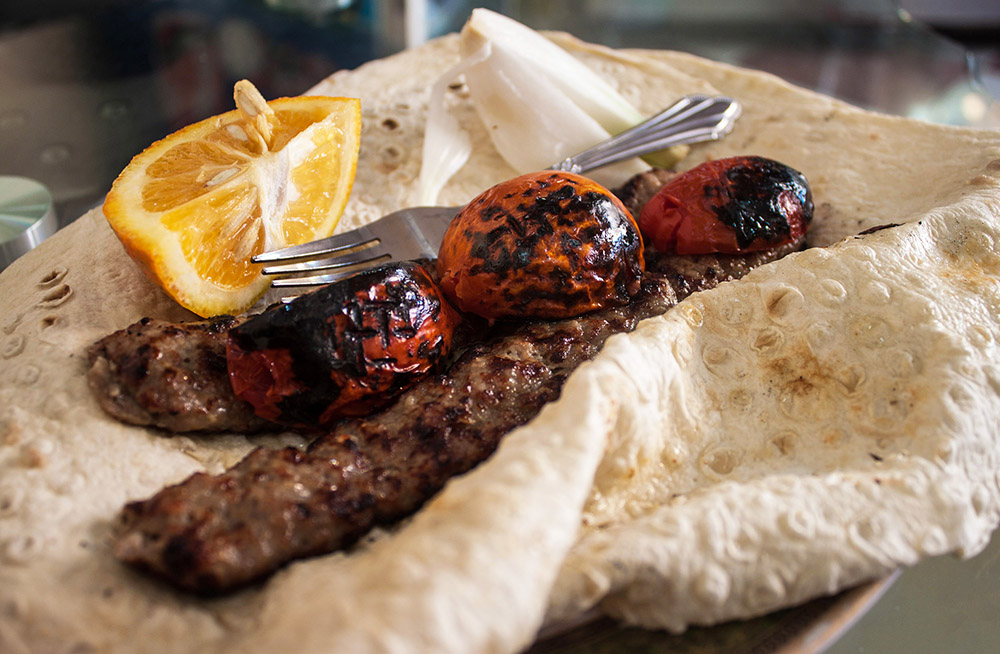
Armchair travel around the world!
Start your reading adventures with our FREE Reading Atlas.

- Around the World in 14 Books
- 7 Thrilling Book Series
- 6 Audiobooks That Are Like Theater For Your Ears



Food and drinks are some of the easiest ways — and the most fun— to vicariously experience another culture. When you add a great book to the mix, you've got the makings of a perfect evening. In Food+Fiction, we recommend a delicious read and a related recipe so you can try the taste of different destinations in your own kitchen.
This post is part of our Food+Fiction series.

Food and family play a significant role in the sweet story of Darius, a nerdy, overweight, half-Persian teen who’s really (really) into tea and doesn’t feel like he fits in anywhere. When his family travels to Iran, he discovers things about himself and the people he loves that change everything.
The author of Darius the Great is Not Okay is Adib Khorram. He bears more than a passing resemblance to his protagonist Darius: He is also a half-Persian tea enthusiast who grew up in the midwestern United States. Through Darius, he immerses us in the sights and tastes of Iran.
The pages of the book are filled with delicious descriptions of Persian food, including qottab (‘little pastries filled with crushed almonds and sugar and cardamom, then deep-fried and coated with powdered sugar’), noon-e panjereh (‘crispy rosette things dusted in powdered sugar’), lavoshak (‘the Iranian version of Fruit Roll-Ups’), and the pièce de résistance: kabobs. There are chelo kabobs (‘ground beef, burnished a bright gold from all the turmeric’) and the signature Persian grilled meat dish called kabob koobideh. They’re a blend of lamb and beef, seasoned with grated onion and turmeric, then finished with lemon butter and sumac — savory, satisfying, and spiced just-so.
In the story, the atmosphere in Maman’s (grandmother’s) kitchen is convivial and brisk, as everyone prepares a family feast together. Darius’ dad — blonde, blue-eyed, and decidedly not Persian — has proven himself to be an excellent kabob maker and is tasked with packing the meat on the skewers. If Stephen Kellner can do it, you can, too! You don’t need to have a Persian granny to successfully make these kabobs at your house.
This recipe requires only a simple list of ingredients, but there’s some kind of magic in it because the end result is irresistible. If you can cook the kabobs over a charcoal fire, that’s the best option, but a gas grill, oven, or stovetop will also work. You’ll definitely want a set of 1-inch wide skewers for the best results.

Serves 4-6. Prep 10 minutes. Marinate 2 hours. Cook 15 minutes.
Kabobs:
Basting:
Grilled Veggies:
Garnish:
Make the meat dough. Peel the onion grate using a box grater. Squeeze out as much onion juice as possible and transfer the onion pulp to a large bowl; save the onion juice. Grate the garlic into the bowl, then add the ground lamb, ground beef, salt, pepper, turmeric, and baking powder. Knead for about 5 minutes to form a cohesive meat dough. It should be quite smooth. Place in the fridge to chill and marinate for 2 hours or overnight.
Shape the kabobs. Wet your hands with water and divide the meat into 8 equal portions. Take a piece and roll it into an oval-shaped sausage, about 4-5 inches long. Holding it in one hand, press the end of the skewer into the meat, wrapping the meat around the middle of the skewer. Gradually spread and mold the meat along the skewer until it’s an even thickness, about 7-8 inches long. Use your index and middle fingers like scissors to press indentations along the length of the kabob, about 1 inch apart; this prevents the kabobs from turning into bulbous blobs. (See video below for a demonstration!)
Cook the veggies. Place the veggies on the skewers and brush with olive oil. To grill: Grill over high heat or very hot charcoals for 15-20 minutes until browned and tender. To broil in the oven: Heat the broiler for 10 minutes, so it’s super-hot, place the veggie skewers on a broiler pan, and cook until browned and tender, 10-15 minutes. When they’re finished, remove them from the skewers, wrap them in foil, and set aside.
Cook the kabobs. To grill: Grill over high heat or very hot charcoals for 15-20 minutes until browned on all sides. To broil in the oven: Heat the broiler for 10 minutes, so it’s super-hot, place kabobs on a broiler pan, and cook for about 10 minutes per side. Stovetop cheat: You can also cook the kabobs in a hot skillet until browned on both sides.
Baste! When the kabobs are cooked to your liking, remove them from the heat and brush with the basting liquid.
To serve, eat rolled in flatbread or alongside basmati rice with the grilled veggies — and maybe with this colorful chopped salad. To be authentic, sprinkle everything with a little bit of sumac, spritz with lemon, top with fresh chopped herbs.
Mom must have mentioned Dad’s preternatural kabob skills, because Mamou put him to work packing the ground beef for kabob koobideh onto skewers. Dad patted the meat around the wide metal skewers, pinching them between his index and middle fingers up and down the length of the blade to seal them on… We ate in the shade of Babou’s fig trees, crowded around card tables or sitting on the ledges of Babou’s herb planters… Baskets of sabzi — parsley and watercress and tarragon and basil and mint, stalks of green onion, fresh radishes carved into flowers — sat on each table. There were lemon wedges to squeeze onto our meat, and tiny glass dishes overflowing with bright ruby sumac, which was for sprinkling over everything. — Adib Khorram
Our hero Darius may be named for Darius I, the third Persian King of Kings. But our Darius feels anything but mighty. He’s nerdy, overweight, really (really) into tea, lonely, and depressed. Now his parents have announced that the family will soon travel to Iran to visit his dying grandfather. Darius knows way more about The Hobbit and Star Trek: The Next Generation than he does about his Persian heritage. He can spit out some lines in Klingon, but he knows zero Faris, unlike his little sister. Plus, he doesn’t fit in at home, so how can he possibly feel a sense of belonging in Iran? {more}
This coming-of-age story (336 pages) was published in August of 2018 by Penguin. The book takes you to modern Iran. Melissa read Darius the Great Is Not Okay and loved it; it wouldn't be on our site if she didn't recommend it.
Bookshop.org is an online bookstore with a mission to financially support independent bookstores and give back to the book community.
Top image courtesy of naytoong/Shutterstock.
Want to keep up with our book-related adventures? Sign up for our newsletter!
Can you help us? If you like this article, share it your friends!
Strong Sense of Place is a website and podcast dedicated to literary travel and books we love. Reading good books increases empathy. Empathy is good for all of us and the amazing world we inhabit.
Strong Sense of Place is a listener-supported podcast. If you like the work we do, you can help make it happen by joining our Patreon! That'll unlock bonus content for you, too — including Mel's secret book reviews and Dave's behind-the-scenes notes for the latest Two Truths and a Lie.
Join our Substack to get our FREE newsletter with podcast updates and behind-the-scenes info — and join in fun chats about books and travel with other lovely readers.

We'll share enough detail to help you decide if a book is for you, but we'll never ruin plot twists or give away the ending.
Content on this site is ©2026 by Smudge Publishing, unless otherwise noted. Peace be with you, person who reads the small type.